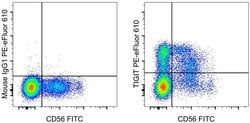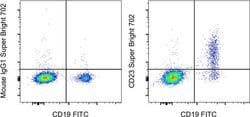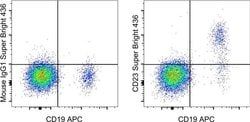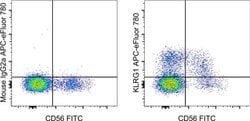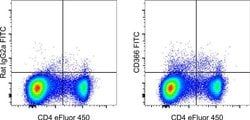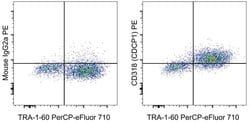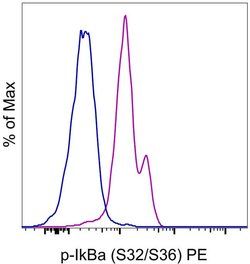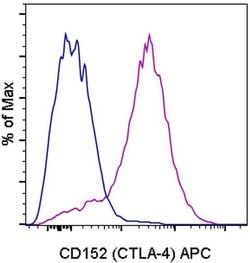CD366 (TIM3) Monoclonal Antibody (RMT3-23), FITC, eBioscience™, Invitrogen™
Rat Monoclonal Antibody
Manufacturer: Fischer Scientific
The price for this product is unavailable. Please request a quote
Antigen
CD366 (TIM3)
Concentration
0.5 mg/mL
Classification
Monoclonal
Form
Liquid
Regulatory Status
RUO
Formulation
PBS with 0.09% sodium azide; pH 7.2
Gene Alias
CD366; FLJ14428; Havcr2; HAVcr-2; Hepatitis A virus cellular receptor 2; hepatitis A virus cellular receptor 2 homolog; kidney injury molecule-3; KIM-3; sCD366; soluble CD366; soluble TIM 3; T cell immunoglobulin mucin 3; T cell immunoglobulin mucin-3; T-cell immunoglobulin and mucin domain containing 3; T-cell immunoglobulin and mucin domain-containing protein 3; T-cell immunoglobulin mucin family member 3; T-cell immunoglobulin mucin receptor 3; T-cell membrane protein 3; Tim3; TIM-3; TIMD3; TIMD-3
Gene Symbols
Havcr2
Primary or Secondary
Primary
Content And Storage
4° C, store in dark, DO NOT FREEZE!
Gene
Havcr2
Clone
RMT3-23
Applications
Flow Cytometry
Conjugate
FITC
Host Species
Rat
Target Species
Mouse
Gene Accession No.
Q8VIM0
Gene ID (Entrez)
171285
Isotype
IgG2a κ
Purification Method
Affinity chromatography
Product Type
Antibody
Description
- The RMT3-23 monoclonal antibody reacts with mouse CD366 (TIM3), a Th1-specific cell surface protein
- The RMT3-23 antibody reacts with CD366 protein expressed by both BALB/c and C57BL/6 strains of mice
- CD366, a type I transmembrane protein, contains an immunoglobulin and a mucin-like domain in its extracellular portion and a tyrosine phosphorylation motif in its cytoplasmic portion
- CD366 is expressed selectively by differentiated CD4^+Th1 and CD8^+Tc1 cells, but is absent on CD4^+Th2 and CD8^+Tc2 cells
- Other hematopoietic cell types, including naive T cells, B cells, macrophages and dendritic cells, do not express CD366, at least at the protein level
- CD366 expression is upregulated at a late stage of T cell differentiation on Th1 cells after 3 rounds of in vitro polarization suggesting a role for this molecule in the transport or effector function of Th1 cells rather than a contribution to T cell differentiation
- In an experimental autoimmune encephalomyelitis (EAE) model, CD366 was shown to be expressed on most CD4^+ and CD8^+ T cells in the central nervous system at the onset of clinical signs of disease, while less than 2% of CD4^+ cells in the periphery expressed CD366 after immunization
- Applications Reported: This RMT3-23 antibody has been reported for use in flow cytometric analysis
- Applications Tested: This RMT3-23 antibody has been tested by flow cytometric analysis of mouse splenocytes
- TIM3 (Hepatitis A virus cellular receptor 2, HAVCR2, T-cell immunoglobulin, mucin-dmain containing-3) is a 281 amino acid long, Type-1 Th1- specific cell surface glycoprotein expressed on terminally differentiated CD4+Th1 and CD8+Tc1 cells
- TIM3 consists of an IgV-like domain, a mucin-like domain in the extracellular region, and a conserved Tyrosine phosphorylation motif in the cytoplasmic region
- TIM3 is involved in macrophage activation and induction of autoimmune diseases
- Further, TIM3 down-regulates aggressive Th1-mediated immune responses and facilitates in the development of immune tolerance
- Pathological significance of TIM3 has been attributed to Experimental autoimmune encephalomyelitis (EAE), a Th-1 dependent autoimmune disease, and also enhances the severity of experimental autoimmune encephalomyelitis in mice.
